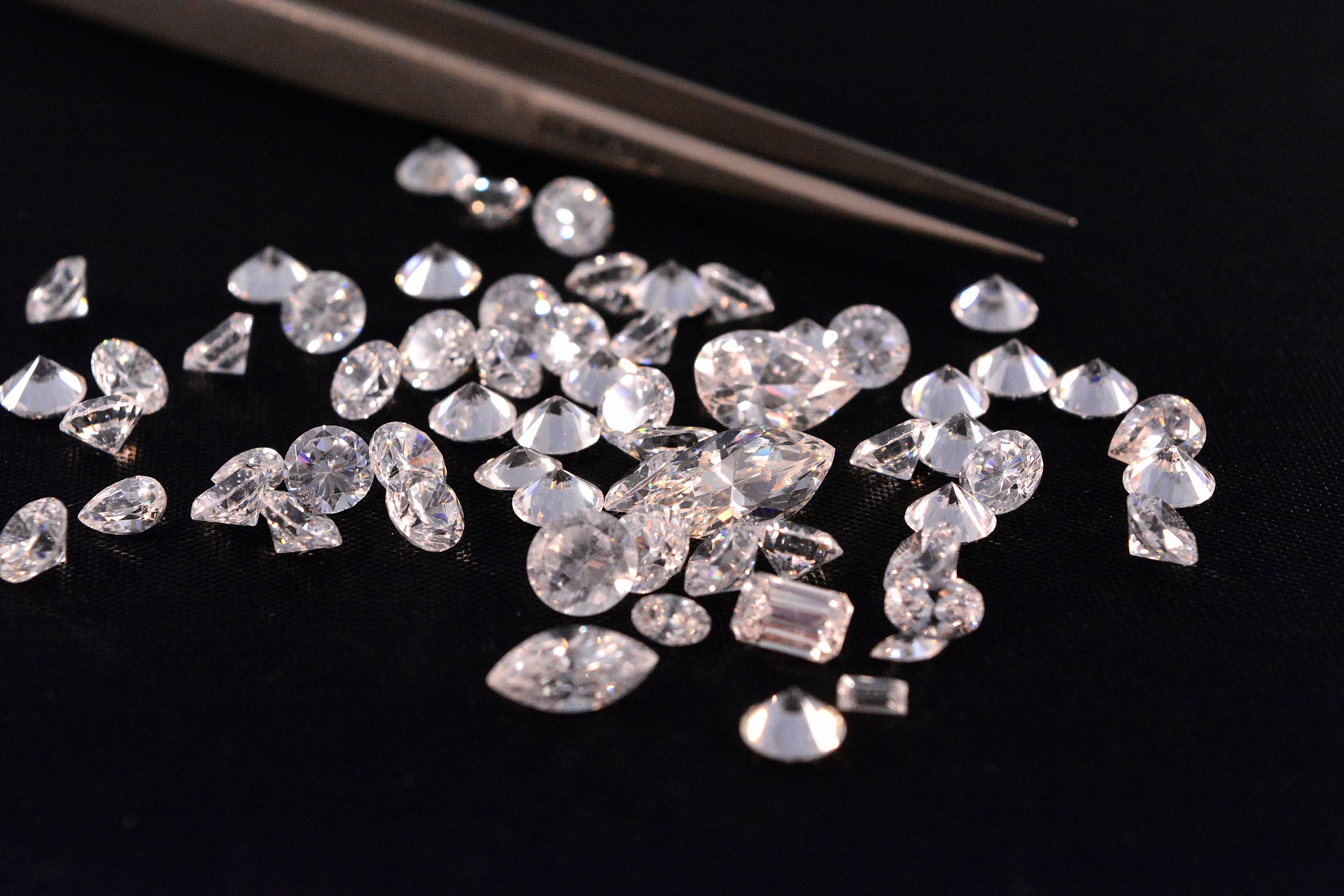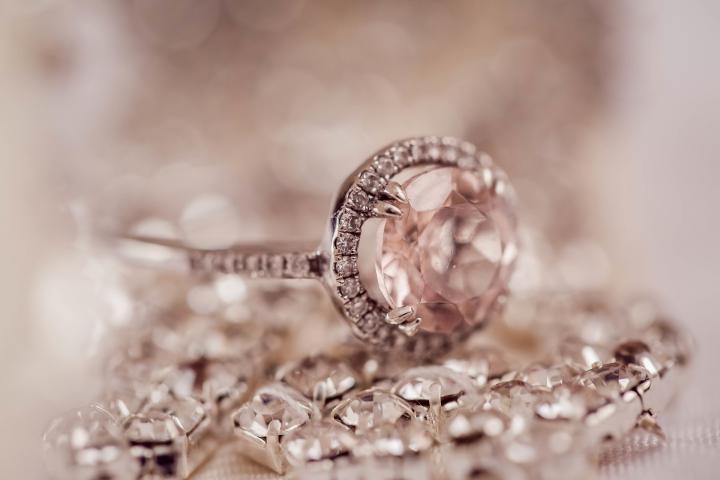Diamonds are a girl’s best friend! The April birthstone, the diamond, is the hardest natural material on Earth—58 times harder than anything else naturally occurring. It has long been a symbol of eternal love, given as an engagement or wedding ring or as an anniversary present. Learn all about the diamond’s history, meaning, and symbolism!
Diamond’s Color
While sparkling and clear diamonds are the most recognizable, the gem comes in a range of colors, including brown, yellow, red, pink, blue, and green. Blue, green, and red are the rarest. The color of a diamond depends on its impurities.
Diamonds can be transparent, translucent, or opaque, but most diamonds used as gemstones are transparent and colorless.

Diamond Meanings, Symbolism, and Folklore
- “Diamond” comes from the Greek word, adamas, meaning invincible or unbreakable. As you could guess, “adamant” also stems from this word!
- For centuries, the diamond was thought to possess healing powers and provide clarity and balance.
- In Sanskrit, the diamond is called vajra, which also means lightning; in Hindu mythology, vajra was the weapon of Indra, the king of gods.
- Pliny the Elder, a Roman naturalist, is said to have described the gem in this way: “Diamond is the most valuable, not only of precious stones, but of all things in this world.”
- It was once thought that a diamond could ward off the evil eye, which was said to cause sickness, poverty, and possibly death.
- In history, the diamond was believed to have healing powers, act as an antidote to poison, and provide protection against the plague.
- During the Middle Ages, diamonds were thought to cure ailments of the pituitary gland and the brain.
- Before the process in which diamonds are created was discovered, some ancient civilizations believed lightning formed them, while others thought they were the tears of God.
- In addition to being a symbol of eternal love and marriage, some thought carrying a diamond would provide strength, beauty, and happiness. Other potential benefits include balance, clarity, and abundance.
- If you dream of wearing diamond earrings, you will receive good financial advice.
- The diamond is not only the April birthstone, but it is also the gem given to celebrate 60th and 75th wedding anniversaries.

History of the Diamond
- The oldest diamonds were formed more than 3 billion years ago.
- It’s believed that the infatuation for diamonds originated in India, where they were collected from rivers and streams. According to historians, India began trading in diamonds as far back as the 4th century B.C. The gem was originally reserved for India’s most wealthy. Soon, though, India’s diamonds made their way to Western Europe and, by the 1400s, became fashionable among Europe’s high society.
- In 300 B.C., diamonds were used to engrave other gems in India.
- The first diamond engagement ring was given to Mary of Burgundy by Archduke Maximillian of Austria in 1477.
- The origin of the blue Hope diamond has been traced back to India’s Golconda mining area in the 1600s. It was then sold to King Louis XIV of France. It currently can be found at the Smithsonian Institution in Washington, D.C.
- The largest diamond ever found was unearthed from South Africa’s Premier mine in 1905. Weighing in at 3,106 carats, the gem produced the Cullinan I diamond, also known as the Great Star of Africa. The 530-carat drop-shaped diamond is set in the Sovereign’s Sceptre with a Cross and housed with the other Crown Jewels in the Tower of London. Cullinan II (the Lesser Star of Africa) cut from the same diamond is also part of Great Britain’s crown jewels.
Where are Diamonds Found?
Diamonds form under extreme temperature and pressure conditions found more than 75 miles under the Earth’s surface.
A gem-quality diamond is more than 99.9 percent carbon, making it one of the purest of all gems. It’s the only gem made up of a single element, while trace elements make up the remaining percentage. Its crystal structure is isometric, meaning that its carbon atoms are bonded together the same way in all directions, creating its incredible hardness.
Once formed, diamonds are pushed upward by volcanic activity until they reach the Earth’s surface or just below. Diamonds are found in a few different locations: rock, alluvial deposits, glacial tills, and kimberlite pipes.
However, diamonds are hard to come by, as is evident by the fact that the average yield from a diamond mine is 1 part diamond to 1 million parts rock.
It’s believed that diamonds were first discovered in India before Brazil became an important factor in the gem’s supply chain in the 1700s. Other deposits were discovered in South Africa in the late 1800s. In addition to South Africa and other African nations, locations like Russia, Australia, and Canada play a role in today’s supply chain.
Diamonds in Jewelry
For hundreds of years, diamonds have been used for engagement and wedding rings, but they are also fashionable for everyday wear. The gem is used for necklaces, broaches, rings, and bracelets.
It is believed that Archduke Maximilian of Austria gave his fiancee, Mary of Burgundy, the first engagement ring containing a diamond in 1477. Today, diamonds are the most popular stone choice for an engagement ring.
Diamonds can be found in a variety of cuts—round, oval, princess, and heart, to name a few. The diamond has a Mohs Hardness rating of 10, and is so hard that the only thing that can scratch it is another diamond.

Learn More












